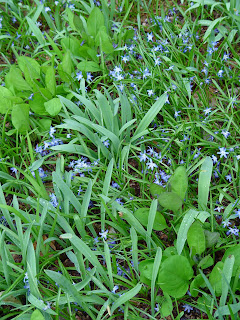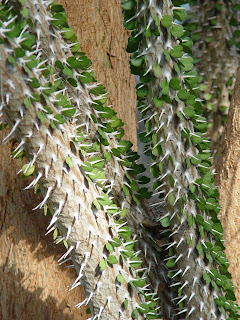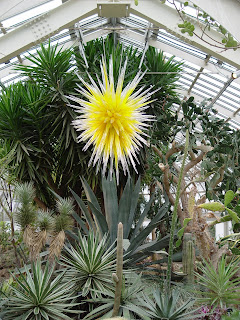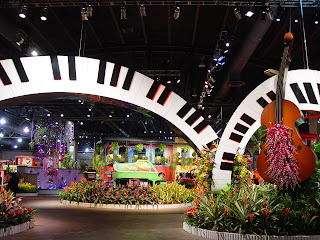A ring of Prunus ‘Accolade’ defines the entrance courtyard to the main house, Chanticleer proper, an upright pink flowering cherry. Within the ring is the area that once served as the driveway and parking area for the house, it too is circular.

Several years ago, the asphalt was taken up, as this "driveway" is now part of the main strolling path at the garden. Replacing the asphalt was crushed red gravel defined by a cobble and bluestone surround. During the season, each morning before the garden open the garden gnome that tends to this area painstakingly rakes the gravel. Using a rake that not only smoothes but also strikes lines in the gravel. This detail meets the visitor at the entrance to the courtyard, and those that arrive early in the day are made to feel that the gravel was raked for them. Others are less appreciative and stroll or walk through the gravel and break the spell for those that follow. Just like in the real world. Every attempt is made to mend or heal the footsteps during the day, but spring is a busy time and it doesn't always happen as soon as it should. Even when it does though, it still a patch, a mend, a fix.

Why is this week special? The cherries are shedding their petals. Breezes caught in this circular courtyard swirl to escape, dislodging the petals and forming at times a pink whirlpool. Quite a special moment if you should happen through during the event. Working in this area for quite a few years you might expect I’m numb to this, but it still delights me.
But alas, when the petals settle, they lodge themselves into the many little valleys created in the raking process, defining both the efforts of the gnome as well as the footsteps of the unappreciative.


















































